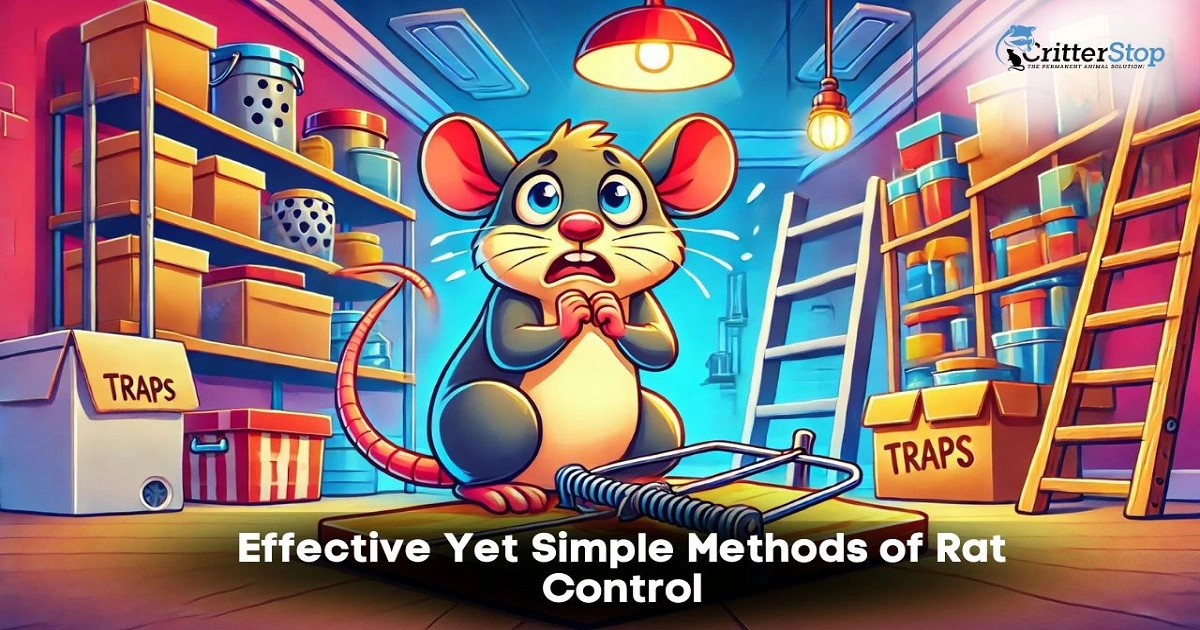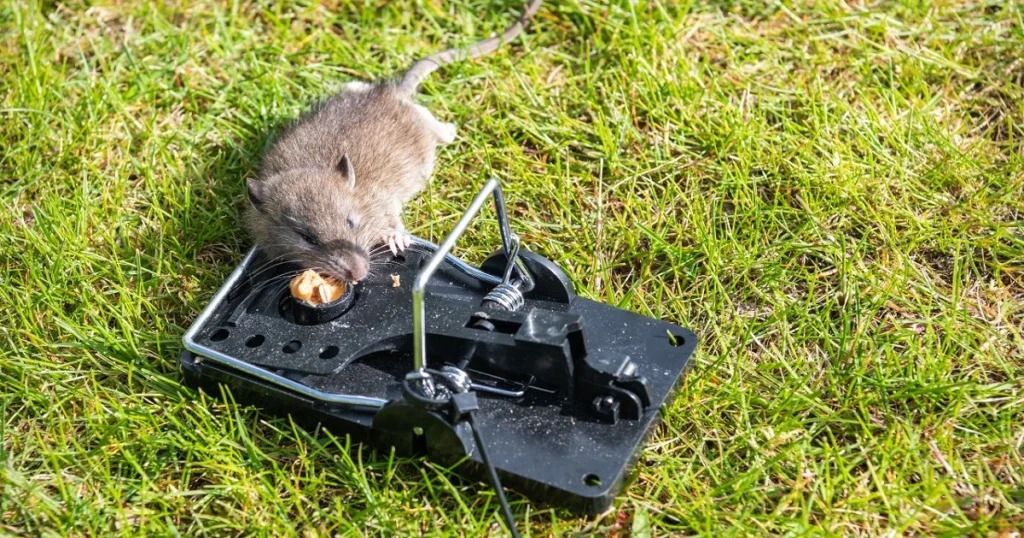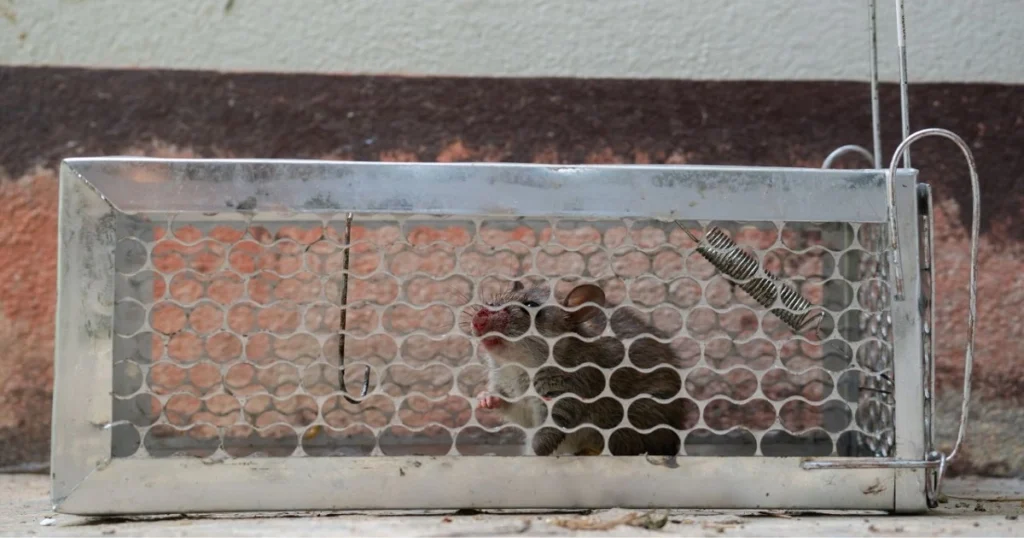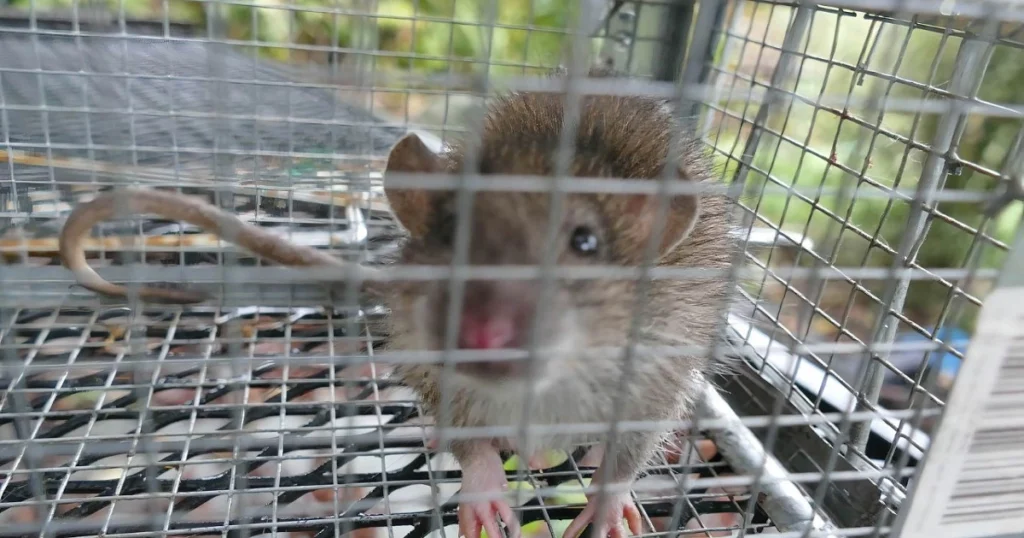
Rodents are small mammals that gnaw and have sharp incisors teeth. They could be mice or rats that cause disturbance to your home. They can damage buildings or property and can cause severe damage like house fires when they chew on electrical wires.
Rodents may contaminate food, water, or surfaces through their urine and stool around your household. They also transmit diseases when they come into contact with human skin. When we have provided our rodent removal services, we have found that rodents multiply faster if favorable conditions for breeding exist, such as shelter, food, and water.
In our experience at Critter Stop, you will notice the presence of rodents by identifying the following:

Snap traps have been used for a long time. They are an effective and inexpensive way of rat removal. One can pre-bait a snap trap using baits such as food to attract the rats to the trap.
After a catch is made it can be disposed of with the rat or reused. The snap trap is placed in areas with evidence of high rodent activity. These areas could include: behind large objects, dark corners, or alongside walls.
Also known as glue boards, they are designed with a sticky surface that attracts rats. The glue trap makes them stuck and unable to escape, and then they suffocate and die.
Glue traps are a non-toxic way of rodent control. Their sizes vary depending on whether it's a mouse or a rat; larger boards are usually for rats. The glue traps could be placed in areas such as along walls or areas they travel.

They are used when one wants to get rid of rats without harming or killing them. The best way to catch a rat or mouse is by placing bait such as peanut butter on one end to attract the rat into the trap. Once a rodent is caught in the live trap, it can be released in its natural habitat.
You should continually inspect it to ensure a catch has been completed. Protective equipment such as masks and gloves is essential when disposing of the rodent.
They aim at destroying the rodent using electrical shock. They are battery or mains-powered. They need little bait to attract the rodents and will continue killing until the battery runs out.
Some brands indicate the trap once a mouse or rat has been trapped. The electronic equipment is reusable, and one does not need to touch the rodent to remove it.

These are pesticides that are used to kill rodents like rats and mice. They are poisonous and are usually created like baits in a way that attracts the rodent to it. It is essential to be careful when using this method to remove rats.
One should follow the label of the rodenticide correctly and identify the type of rodent to be eliminated first. These rodenticides should be placed in an area far from children, as they can be attractive to them. They are dangerous and toxic if eaten by any living thing.
Choose the best and most effective rodent control method to remove rodents from your home. Remember that handling rodents in your home could be dangerous. After removing mice and rats, check your home and remove any means of entry, such as holes, and favorable spaces for survival, such as food, shelter, and water. It will ensure the house is rodent-free in the future. There are many ways to eliminate your rodent issue, but none of these are permanent, and the problem will reoccur until the entry points and weak points of the home are sealed, a trapping process is performed, and your home is sanitized.
Keep your family safe and pest-free for good with our lifetime-guaranteed rodent removal services. Get help and contact Critter Stop. Our team of removal experts has provided hundreds of services in the Dallas and Fort Worth area, counting on the right experience to solve your problem. Call us now at (214) 234-2616 and get a free inspection!

Rats can be a significant problem, especially when they enter your home or attic. Effectively controlling and removing these pests is essential for maintaining a safe and healthy environment. This FAQ section addresses common questions about rat control, offering simple yet effective methods that align with humane practices.
Catching a roof rat quickly requires a combination of strategic trap placement and the right bait. Place snap traps or live traps along the rats’ common pathways, such as near walls or in dark corners of the attic. Using multiple traps increases your chances of success. The key is to position them where you've noticed droppings or gnaw marks, as these are indicators of frequent activity.
Yes, live traps are a great option if you want to avoid harming the rat. Place these traps in areas where you've seen signs of rat activity. Peanut butter or nuts can be used as bait, as these are appealing to roof rats. Once caught, ensure you release the rat far from your home, in a wooded area or park, to prevent it from finding its way back.
The best baits for catching roof rats include peanut butter, nuts, seeds, and fruits. Peanut butter is particularly effective because of its strong smell and stickiness, which ensures that the rat has to work to get the bait, increasing the chances of triggering the trap. You can also use pieces of dried fruit or bacon for a more varied bait selection.
Absolutely. Humane methods include using live traps, which capture the rat without causing it harm. Once caught, it’s crucial to relocate the rat at least a mile from your property, ideally in a wooded or less populated area. Always check local wildlife regulations to ensure you comply with any rules about relocating wild animals.
To humanely remove a rat from your attic, start by sealing all potential entry points to prevent more rats from entering. Next, set up live traps baited with peanut butter or fruit. Once you’ve caught the rat, relocate it safely away from your home. Finally, clean the attic thoroughly to remove any traces that might attract other rats.
One of the best chemical-free strategies is to use a combination of exclusion techniques and trapping. Start by identifying and sealing all possible entry points, including small cracks and vents. Set up live traps to capture and release the rats far from your home. Regularly check traps and maintain a clean environment to prevent future infestations. Natural repellents like peppermint oil can also help deter rats from staying in your attic.
By following these effective yet simple methods of rat control, you can manage and eliminate rat infestations in a humane and environmentally friendly manner. For professional assistance, Critter Stop is here to help you implement the best strategies tailored to your specific needs.
Visit our Critter Library and learn more about our furry friends







